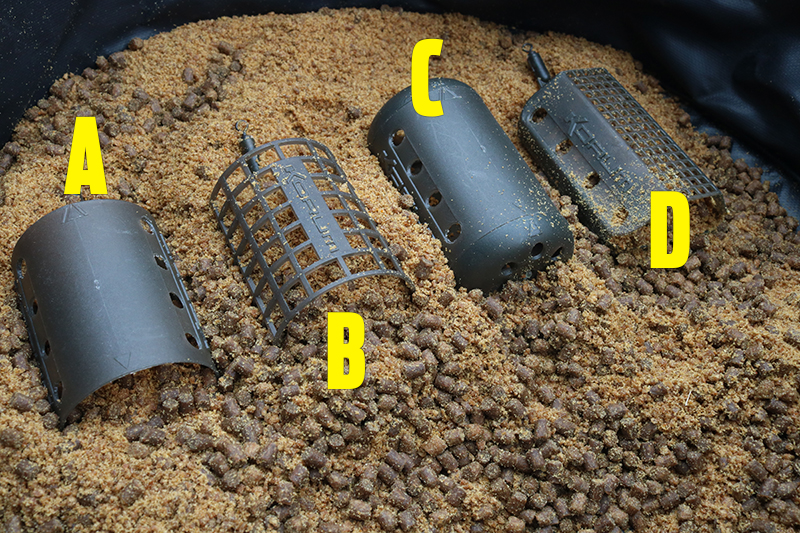The best feeders for barbel fishing
On big rivers such as the Severn, Wye and Trent every swim is different, so a selection of feeders is important. A number of factors decide me on which feeder to use in any given swim. First, how much bait do I want to introduce?
I generally start with a large feeder for the first hour and cast every 15 minutes or so to lay a bed of bait down. If bites come I’ll stick with a large feeder – if not I will switch to a smaller one and recast every half-hour.
In fast-flowing swims I like to use a traditional style of feeder with holes, but in slower swims a mesh-type feeder can be a better option, as it releases its contents more easily.
The weight of the feeder is determined by the depth, flow, and distance across the river I am casting.
Generally the deeper, the faster flowing the river and the further across I am casting, the heavier the feeder needs to be to hold bottom. I aim to get the feeder to quickly hold in one place after it has settled after casting.
Open-End feeder
A traditional open-end feeder offers a slower release, as the water cannot get to the bait so quickly. This can be really useful in deeper water or very fast flows.
Mesh feeders
Mesh feeders will release bait quicker and activate a swim sooner than other kinds of feeder. The cage-like structure allows water to start breaking down your mix quickly.
Combi feeder
A Combi, or blockend, feeder really slows down the release of bait because the ends are closed. It’s preferred when maggot fishing, but is also useful with a standard pellet mix.
River feeder
This special Korum river feeder has been designed so you can use less weight in faster flows. The low profile stays pinned to the riverbed and is unobtrusive to big barbel.

